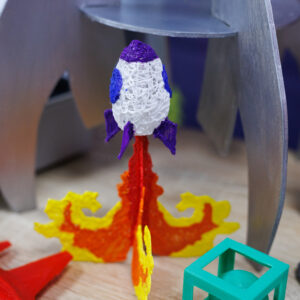This course introduces children to the basics of portrait drawing through a structured curriculum designed to develop their observation and artistic skills. It consists of two parts, each totaling 12 hours. In Level 1, students will focus on drawing individual facial features—eyes, nose, lips, and ears—learning to shade and capture them from various angles. As they advance through the levels, they will focus on drawing full faces, mastering proportion, and enhancing detail.
Upon completing both parts, students can apply for a KHDA-approved certificate. The course offers up to four levels, allowing students to continue refining their portrait drawing abilities.
What They Will Learn:
- Drawing facial features like eyes, nose, lips, and ears, and shading them from different angles.
- Basic understanding of proportion in portrait drawing.
- Shading techniques to bring depth and realism to their drawings.
- In higher levels, students will focus on drawing the full face with accurate proportions and more detail.







